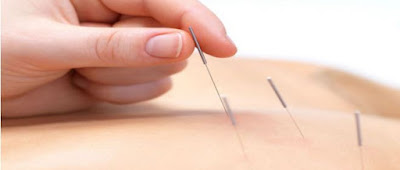At a consultation, the traditional acupuncturist uses a set method of ancient rules to determine the acupuncture points. The texture and colouring of the skin, type of skin, posture and movement and the tongue will all be examined and noted, as will the patient’s voice. These different factors are all needed for the Chinese diagnosis. A number of questions will be asked concerning the diet, amount of exercise taken, lifestyle, fears and phobias, sleeping patterns and reactions to stress. Each wrist has six pulses, and each of these stand for a main organ and its function. The pulses are felt (known as palpating), and by this means acupuncturists are able to diagnose any problems relating to the flow of qi and if there is any disease present in the internal organs. The first consultation may last on hour, especially if detailed questioning is necessary along with the palpation.
The needles used in acupuncture are disposable and made of a fine stainless steel and come already sealed in a sterile pack. They can be sterilized by the acupuncturist in a machine known as an autoclave but using boiling water is not adequate for this purpose. (Diseases such as HIV and hepatitis can be passed on by using unsterilized needles.) Once the needle is inserted into the skin
it is twisted between the acupuncturist’s thumb and forefinger to spread or draw the energy from a point. The depth to which the needle is inserted can vary from just below the skin to up to 12 mm (half an inch) and different sensations may be felt, such as a tingling around the area of insertion or a loss of sensation at that point. Up to 15 needles can be they are left in varies from a few minutes to half an hour and this is dependent on a number of factors such as how the patient has reacted to previous treatment and ailment from which he or she is suffering.
Patients can generally expect to feel an improvement after four to six sessions of therapy, the beneficial effects occurring gradually, particularly if the ailment has obvious and long-standing symptoms. Other diseases such as asthma will probably take longer before any definite improvement is felt. It is possible that some patients may not feel any improvement at all, or even feel worse after the first session and this is probably due to the energies in the body being over-stimulated. To correct this, the acupuncturist will gradually use fewer needles and for a shorter period of time. If no improvement is felt after about six to eight treatments, then it is doubtful whether acupuncture will be of any help. For general body maintenance and health, most traditional acupuncturists suggest that sessions be arranged at the time of seasonal changes.





No comments:
Post a Comment